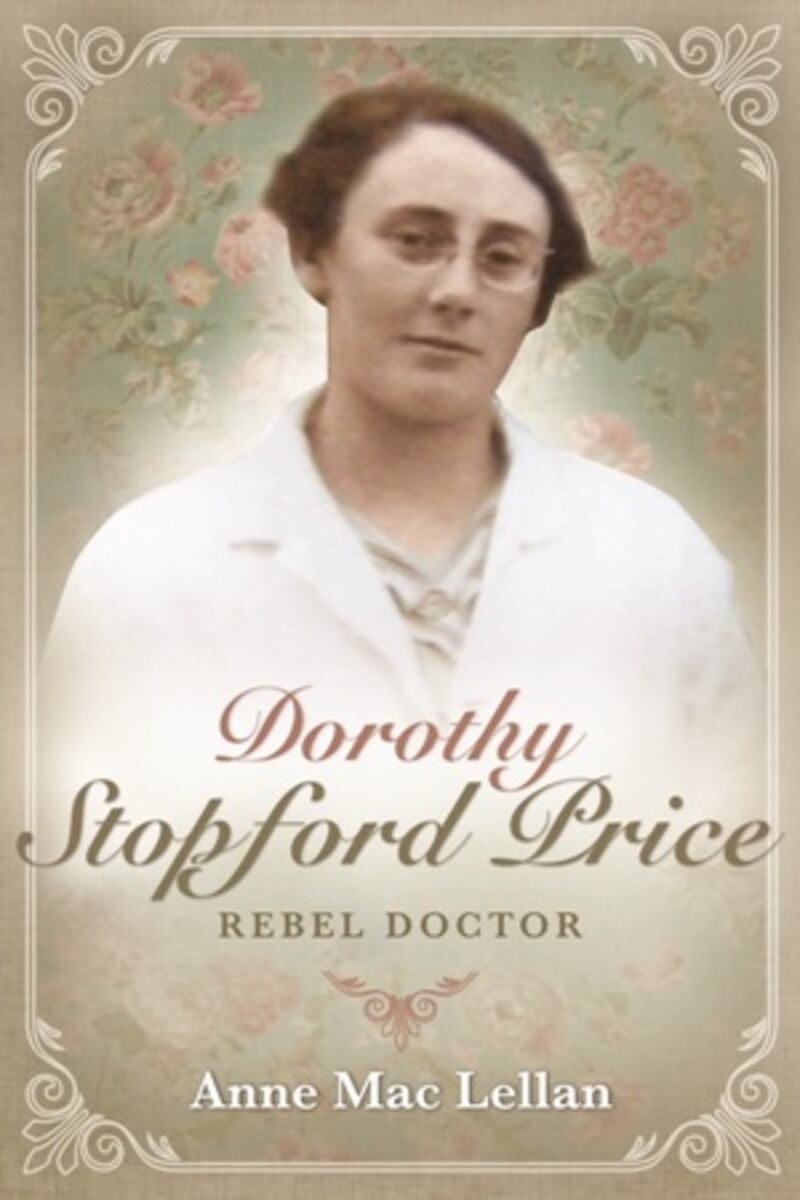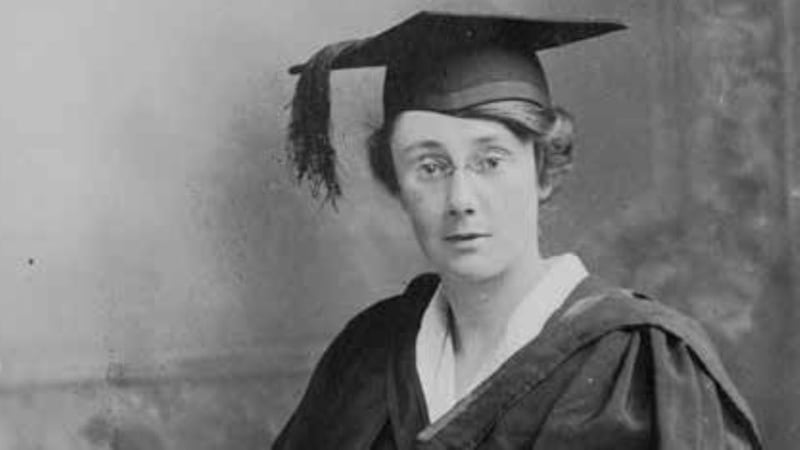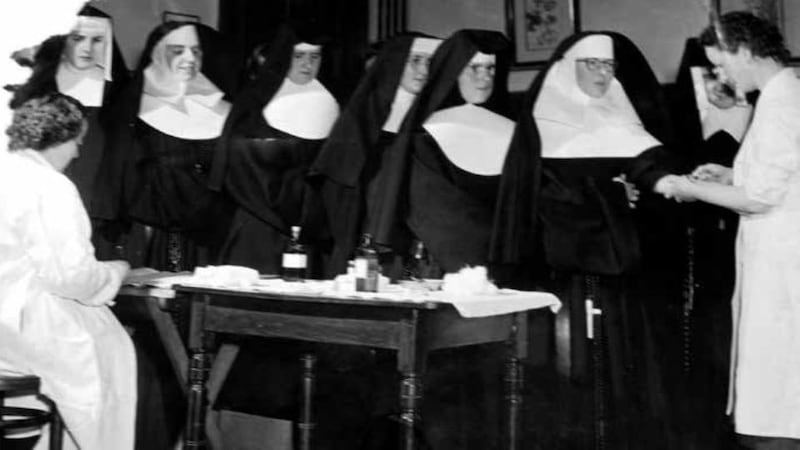
Tuberculosis was a diagnosis peculiarly dreaded in Ireland for much of the 20th century. There was a stigma attached to sufferers: it seemed to run in families, and survivors and their relatives were correspondingly tainted. So, no one wanted tuberculosis recorded on a relation’s death certificate. Association with the disease was not good for employment or marriage prospects.
For those unlucky enough to contract tuberculosis prior to curative drugs, the prospect was of a long illness which might entail months or years in a sanatorium. There was drama associated with the symptoms. In adults, the bacteria usually targeted the lungs and bright red blood might be coughed up. Film and literary images of white handkerchiefs spotted or drenched in blood abound. In children, this form of the disease was less common. Instead, bones and joints, the abdomen or the membrane around the brain might be infected. Mortality figures were high but, as the century progressed, tuberculosis seemed to be going into slow decline. Nonetheless, for the first half of the 20th century, it remained, arguably, Ireland’s greatest public health problem.


During the second World War, or the Emergency as it was known in Ireland, there was a spike in the death rate from tuberculosis. In 1942, more than 4,000 people died from the disease in Ireland (a comparable figure to 1926). That year, a group of doctors got together in an attempt to raise national consciousness about tackling tuberculosis. They wanted the country to adopt new methods of diagnosis and prevention as well as provide more sanatorium beds and improved aftercare. They also hoped to tackle the stigma. It was an all-Ireland group with members in Northern Ireland as well as the Free State.
This group was founded by Dr Dorothy Stopford Price, a Protestant paediatrician and tuberculosis expert who had studied medicine in Trinity College Dublin, and who worked in St Ultan's Infants Hospital in Dublin. Another early member of the group was Dr John Duffy, a Catholic. Following the custom of many Catholics at the time, he wrote to Dublin's Archbishop John Charles McQuaid informing him of the group's intention to found a national anti-tuberculosis league and assuring him that there was nothing in it contrary to Catholic teaching. The archbishop had recently founded the Catholic Social Service Conference to co-ordinate the welfare work being done by various groups so he was well aware of the medical, social and economic problems caused by tuberculosis affecting a breadwinner, a mother or a child. Dr McQuaid wrote to John Duffy that the conference would support the efforts of the new group.
As the group grew in number, and began to include other professionals such as veterinarians (bovine tuberculosis was a major problem), Dr Duffy continued to reassure the archbishop that the Catholic interest was being looked after. He told him that he had succeeded in having the county branches of the league placed under the guidance of the County Medical Officers of Health who were almost all Catholics and many of them were “leading Catholic activists”.
By 1943, the group was ready to include lay people. It was now chaired by Prof Robert Rowlette of TCD, a Protestant and the president of the Royal College of Physicians of Ireland, and Drs Duffy and Price were joint honorary secretaries. A large-scale public meeting was planned for February 1943, to take place in the Hibernian Hotel, Dublin, and the archbishop was asked along. However, he had other plans. Before the opening address could be delivered, the archbishop's emissary Monsignor Daniel Molony insisted on reading aloud a letter from the archbishop which expressed His Grace's "definite opinion" that a national anti-tuberculosis campaign should be carried out by the Red Cross (which was effectively a Catholic organisation) rather than the proposed league. The meeting fell into disarray. There were a number of objections voiced but no one among the assembled group, which included professionals, business people and politicians, seemed to seriously consider that his Grace could be ignored.
In the days preceding the meeting, the archbishop had prepared the ground carefully at the highest level. He had contacted Dr Conn Ward, the parliamentary secretary at the Department of Local Government and Public Health, and explained his views. Ward agreed to see the minister, Sean MacEntee, on the matter. MacEntee assured the archbishop that he would send a representative to the meeting to give a "headline of direction rather than a blessing". Meanwhile, the archbishop had approached Frank Aiken, the minister for co-ordination of defensive affairs, and Aiken said he would see Mr Justice Maguire of the Red Cross Society. Following the meeting, the archbishop went to the very top of the political tree and explained the case for the Red Cross tackling tuberculosis to the taoiseach, Eamon de Valera.
The group that had planned the league bowed to pressure and its members were subsumed into the Red Cross. By March 6th, Malony reported to Archbishop McQuaid that, at a meeting of 22 members of the Red Cross and 19 members of the planning group, a new committee was formed: “net result eight from Red Cross and seven from anti TB but all Catholic except for two, Dr Rowlette and Dr Price. In addition, doctors elected from Cork, Limerick, Waterford and Galway all Red Cross people.”
The idea of starting a national anti-tuberculosis league had been suggested to Dorothy Stopford Price, in 1939, by Prof Arvid Wallgren, a Swedish tuberculosis expert who had pioneered the use of BCG vaccine. He had advocated "mixing up" Catholics and Protestants, physicians and laymen, republicans and people of other political inclinations. She told him of her "brief excursion into public life". A group of the "best tuberculosis doctors worked for a year to form an anti-tuberculosis league on international lines", she wrote. However, they were given what amounted to a "royal command" to allow the campaign to be conducted by the Red Cross. "The reception which the Anti-Tuberculosis League got would lead one to suppose that we were naughty children caught (just in time) in the act of doing something disgraceful." She concluded that they would, under the banner of the Red Cross, "achieve something, rather emaciated in contrast with what we had anticipated; we are not badly off for money which is one thing. However, this embryo country must be led step by step in accordance with its awakening mentality…"
When the historian John Whyte, in later years, put the matter of the proposed national anti-tuberculosis league to the archbishop, Dr McQuaid was evasive. He had merely wished to express what he termed "well-founded objections". This was patently not the case.
In any event, the Red Cross anti-tuberculosis committee was initially active and energetic but Dorothy Price's association with it was brief. She left in 1944 following a ruling that all members of the committee must also be members of the Red Cross. In 1947, a letter from the Red Cross to the secretary of the Department of Health stated that "pending the provision of adequate bed accommodation we have slowed up somewhat on propaganda with the result that there has been a noticeable decline in interest in the problem throughout the country and particularly among our branches".
Ireland’s tuberculosis epidemic came to an end in the late 1950s when the advent of antibiotics effective against tuberculosis coincided with a series of public health interventions as well as increased economic prosperity. A mass BCG vaccination programme, an improvement in diagnostic measures, the provision of more hospital beds and better nutrition all played a part in addition to the new drugs.
Dorothy Stopford Price’s belief that a national anti-tuberculosis league might have hastened the end of the epidemic was not tested: the archbishop had, instead, framed the tackling of tuberculosis in Ireland in the 1940s as a Catholic problem. There are various accounts of the archbishop’s brush with the national anti-tuberculosis league in the historiography. However, the role played by Dorothy Stopford Price has largely been ignored.
Today, tuberculosis falls firmly within the medical domain. Although the epidemic phase ended in Ireland in the late 1950s, it should be noted that tuberculosis has maintained a continuous, albeit less conspicuous, presence here.
Anne Mac Lellan is the author of Dorothy Stopford Price: Rebel Doctor (Irish Academic Press, 2014)









